Covid-19 has reduced mobility nationwide and our immediate neighbourhoods have since taken on a crucial role in providing respite from isolation in our homes. Premised on Singapore’s low-income elderly being one of the worst hit groups by the pandemic, this thesis studies one of Singapore’s oldest and poorest neighbourhoods, Jalan Kukoh, and seeks to craft it into the nation’s first Blue Zone.
The Hill Enclaves
Jalan Kukoh is situated in Singapore’s prime land, nestled amongst hot spots like Chinatown, Clark Quay and the Singapore River. Despite being set on a hill, it is an invisible community, known only as one of Singapore’s oldest and poorest neighbourhood. It is separated from the urban fabric by the Central Expressway to its south, and Havelock Road to its north, accessible by steep stairs and narrow paths. Within the neighbourhood, it is further divided by tall and wide retaining walls, rendering the elderly of lower mobilities trapped within its grounds. Built in the 1970s, its HDBs houses numerous commercial plots. Yet, most of them are either stale, closed or empty.
The neighbourhood sits on adjacent to yet another hill – Pearl’s Hill City Park. This gem shares a similar narrative to that of Jalan Kukoh, forgotten and viewed merely as a backyard to the buildings flanking its sides. In this regard, the two hills are extremely fragile. If left to their own, their ecologies are likely to dwindle and enter a state of ruin.
Palaces for the People
The thesis premised on a three-fold ethnographic research on elderly staying in three distinct rental flat neighbourhoods around Singapore. This research involved in-person interviews, mobility mappings and charting pattern languages of behaviour and thought.
Research into social infrastructure and third places were pertinent as they repair fractures societies and broken communities we live in today, as is the state of Jalan Kukoh.
Thereafter, a dive into Blue Zones around the world provided frameworks for building an antifragile and thriving senior-heavy community.
The Blue Pearl
The Blue Pearl aims to position Pearl’s Hill and Jalan Kukoh as front gardens within the Outram district instead of hidden backyards. Its narrative is centred on lessons learnt from Blue Zones, namely that of food, environment, community and activeness, whilst taking into consideration the strengths and limitations of the site conditions.
The Blue Pearl was thus conceived centred on the following six strategies:
1. Varied demographic
2. Healthy diet – the ritual of food
3. Flora and fauna – extending Pearl’s Hill into Jalan Kukoh
4. Promoting activeness through the natural and built environment
5. Spiritual spaces
6. Social infrastructure for communities of all types
These attributes work together to create a productive ecology which meets the various needs of the elderly and neighbourhood even in times of crisis. The impact of the Blue Pearl would extend beyond the neighbourhood to the wider Outram district, connecting two major city parks – Pearl’s Hill and Fort Canning, through a green belt.
In conclusion, The Blue Pearl serves as a prototype in crafting a thriving senior-centric neighbourhood through tackling the issues of ageing in place systematically, through sensitivity to site, community, and the environment.
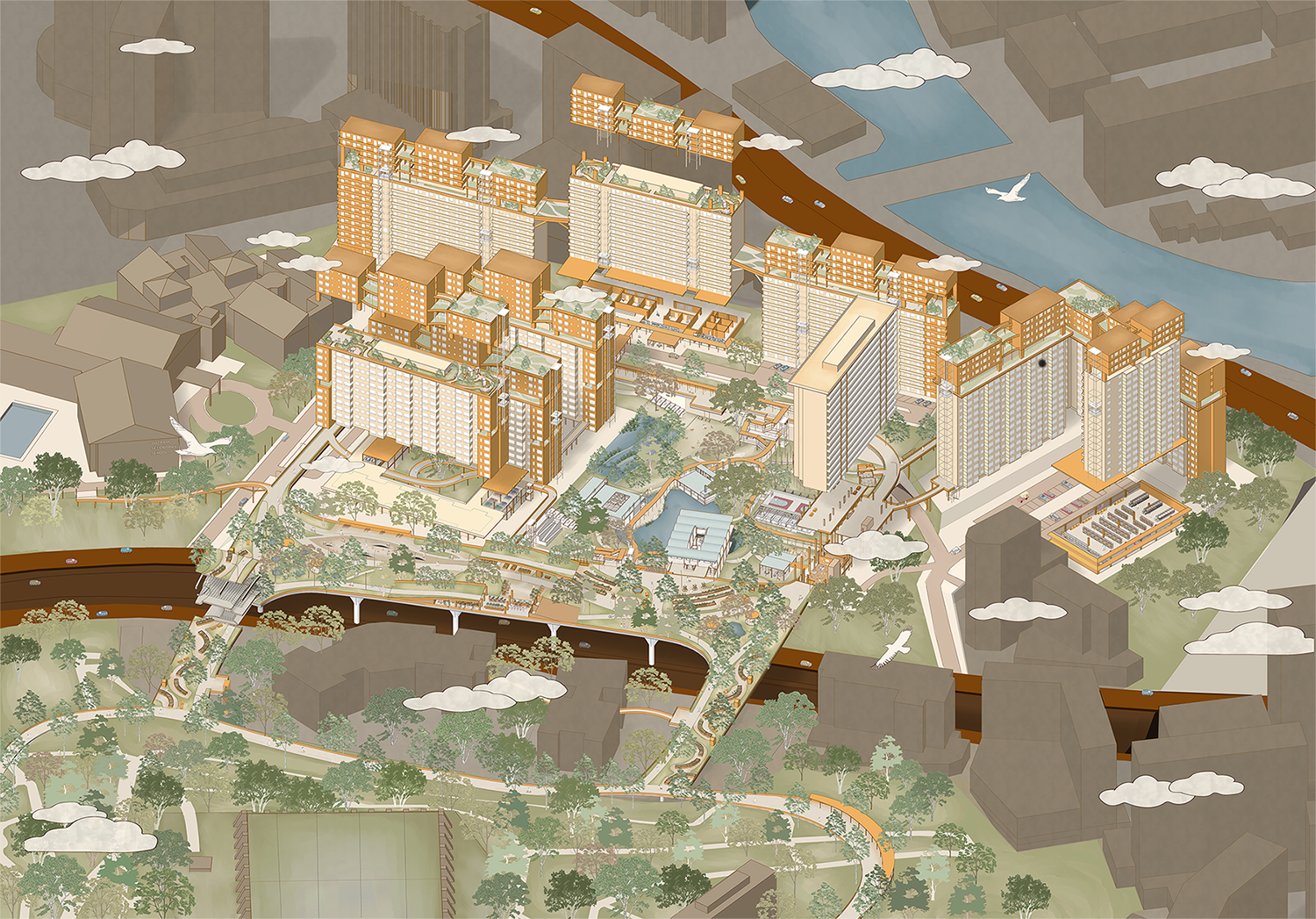



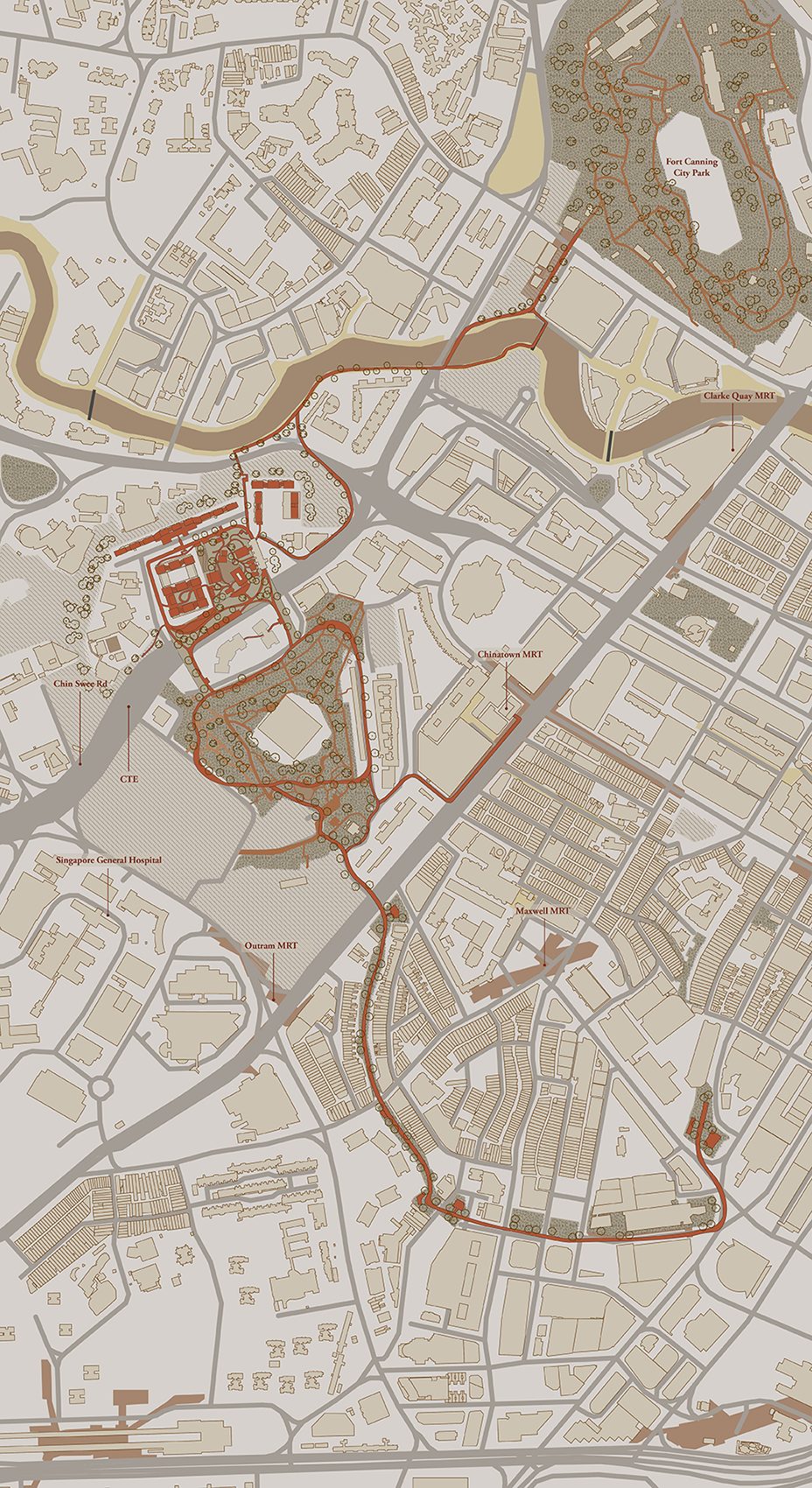
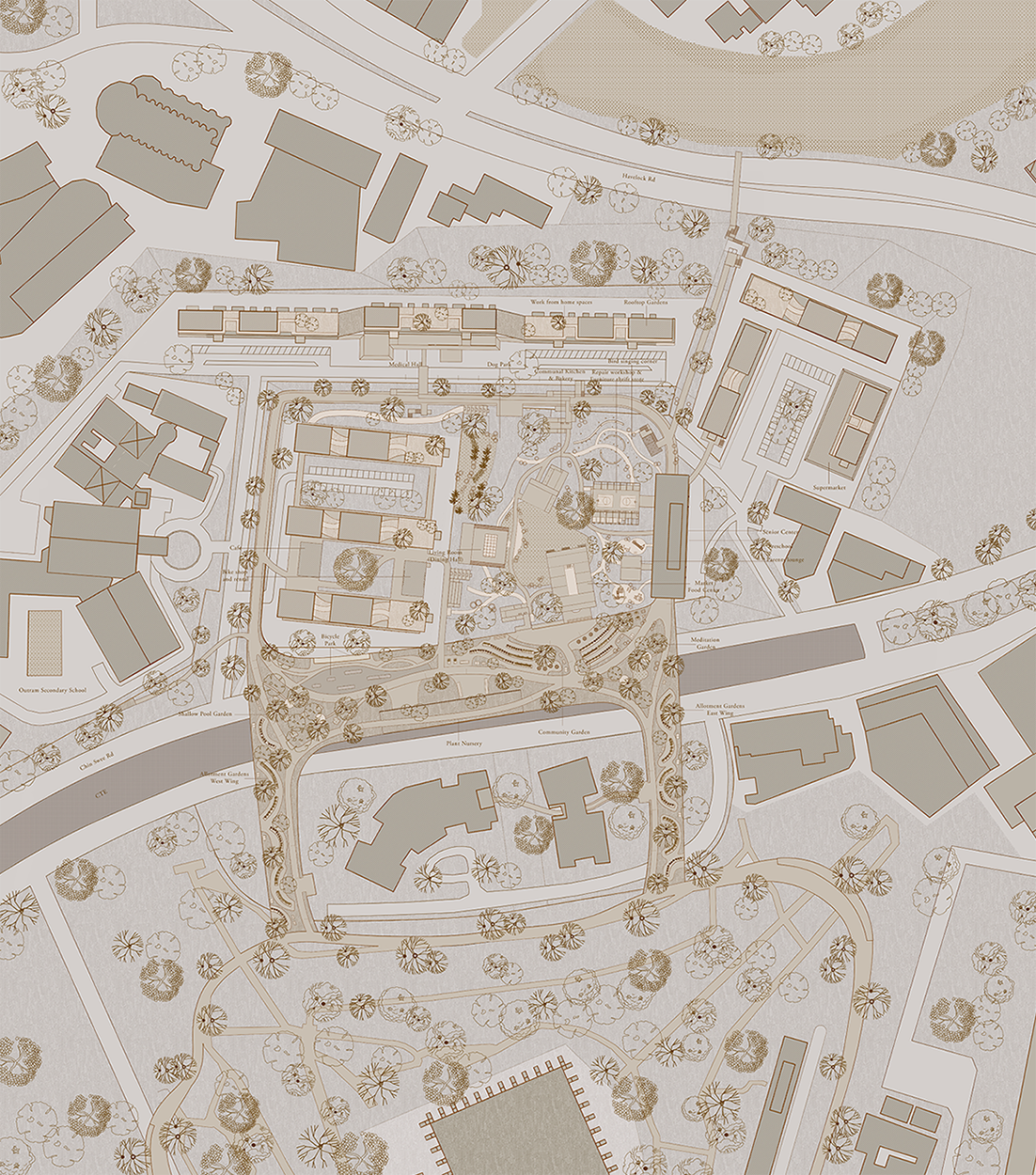



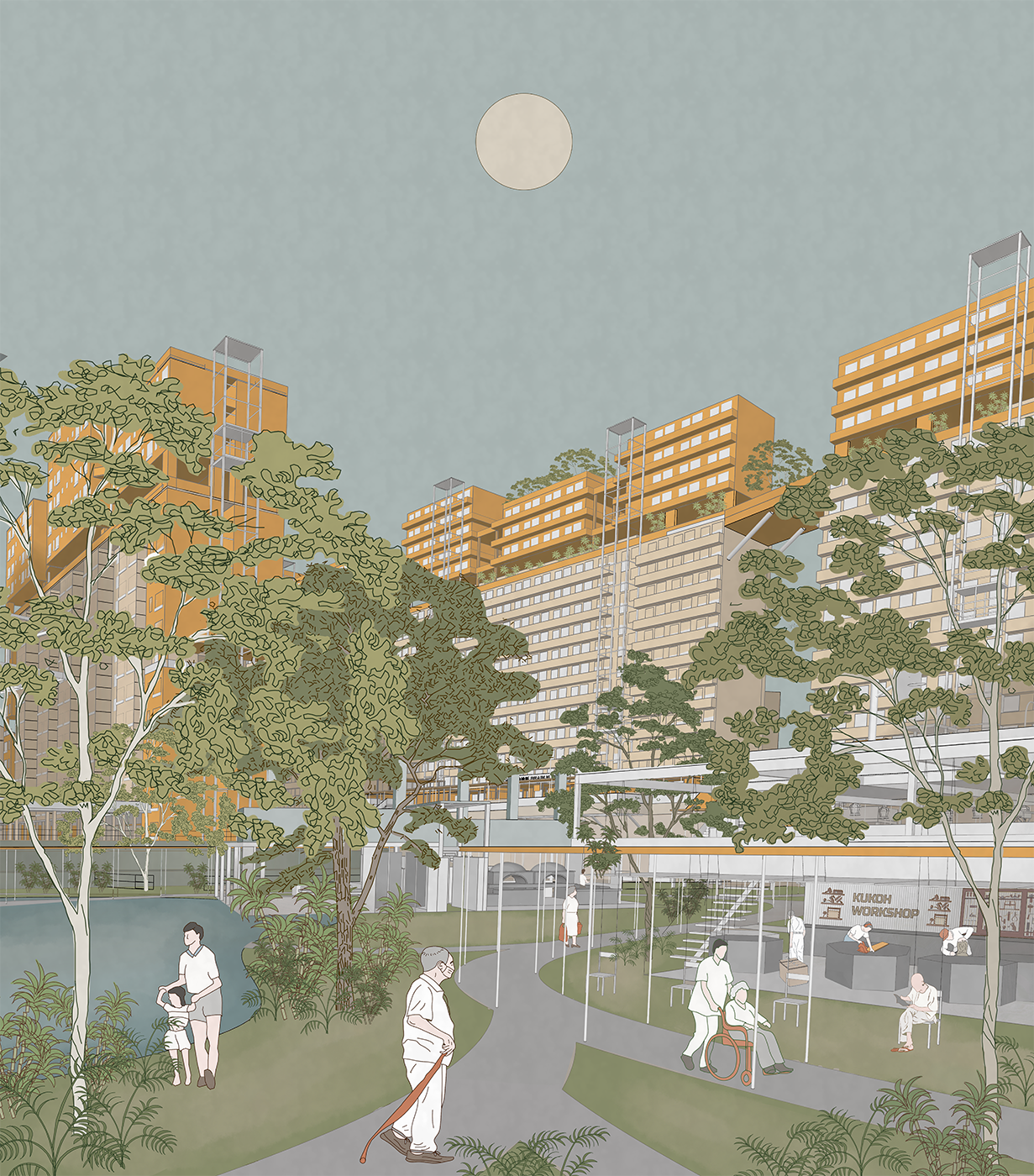
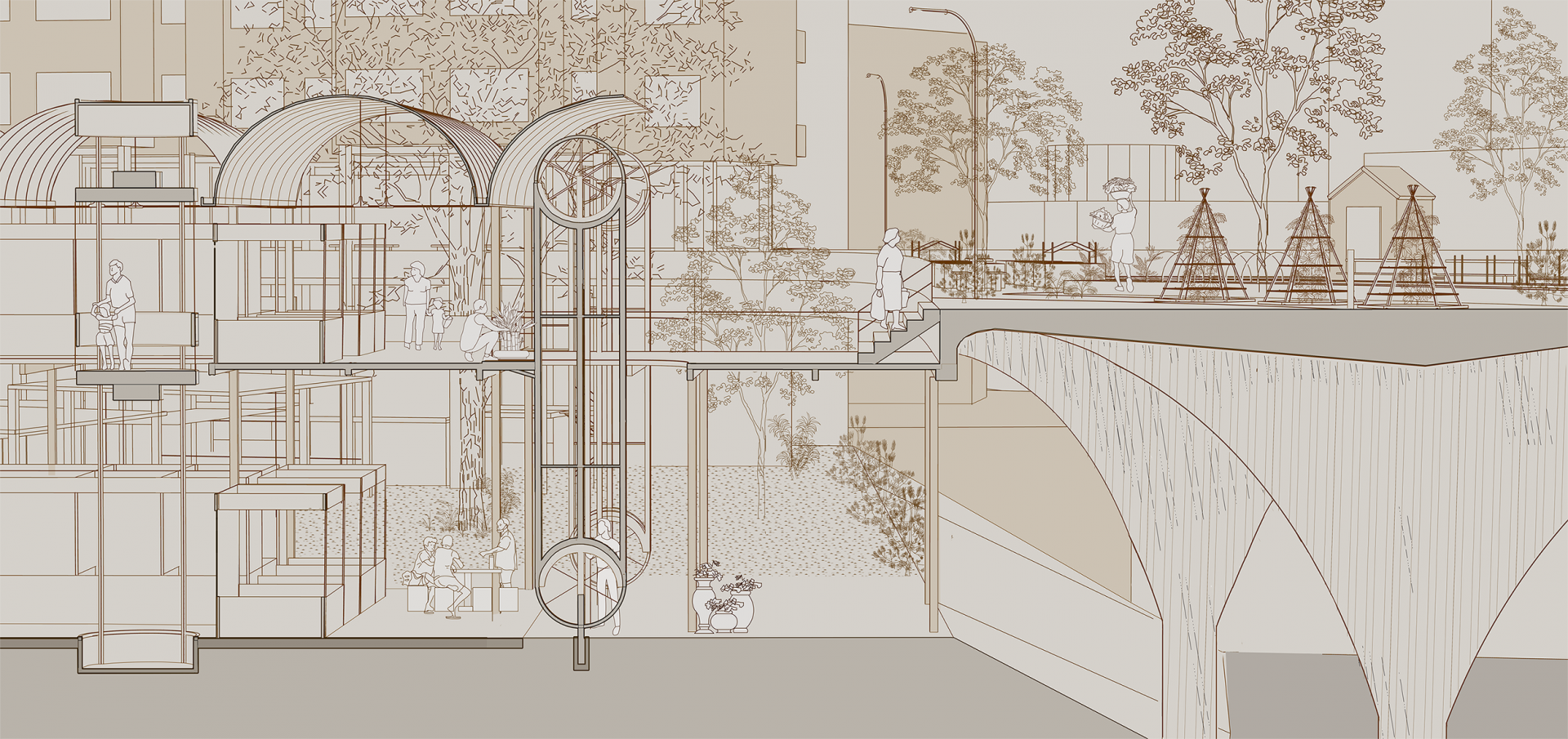
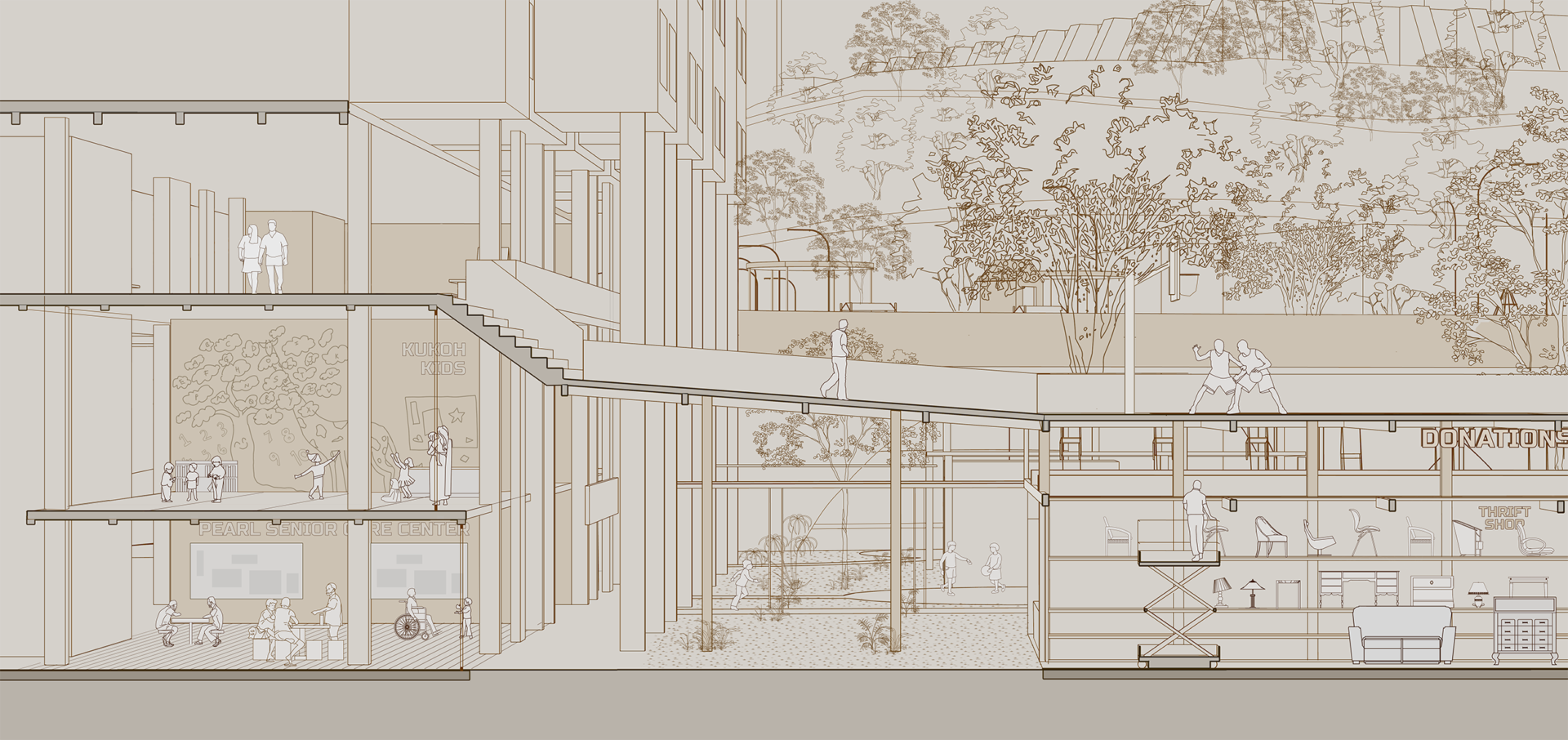
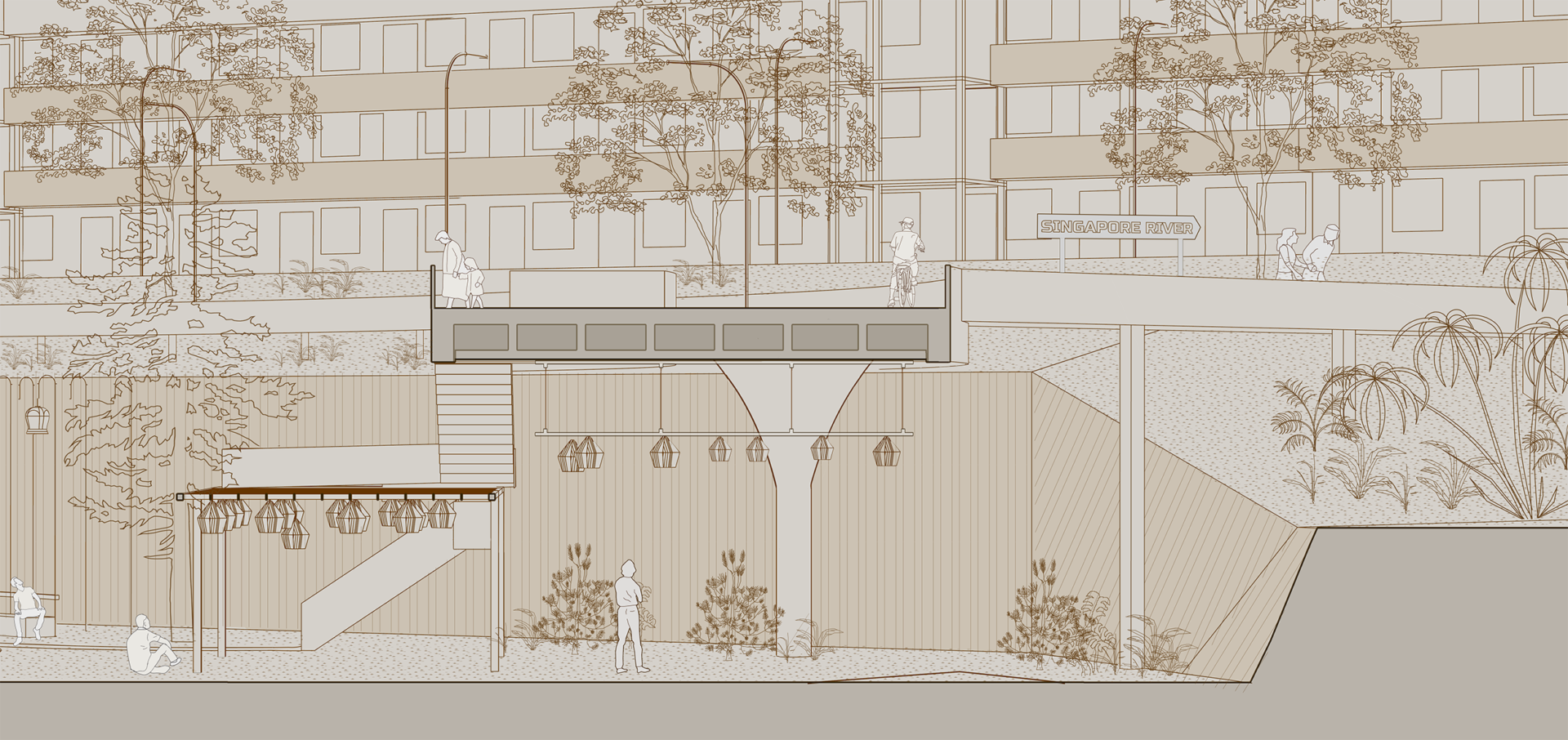
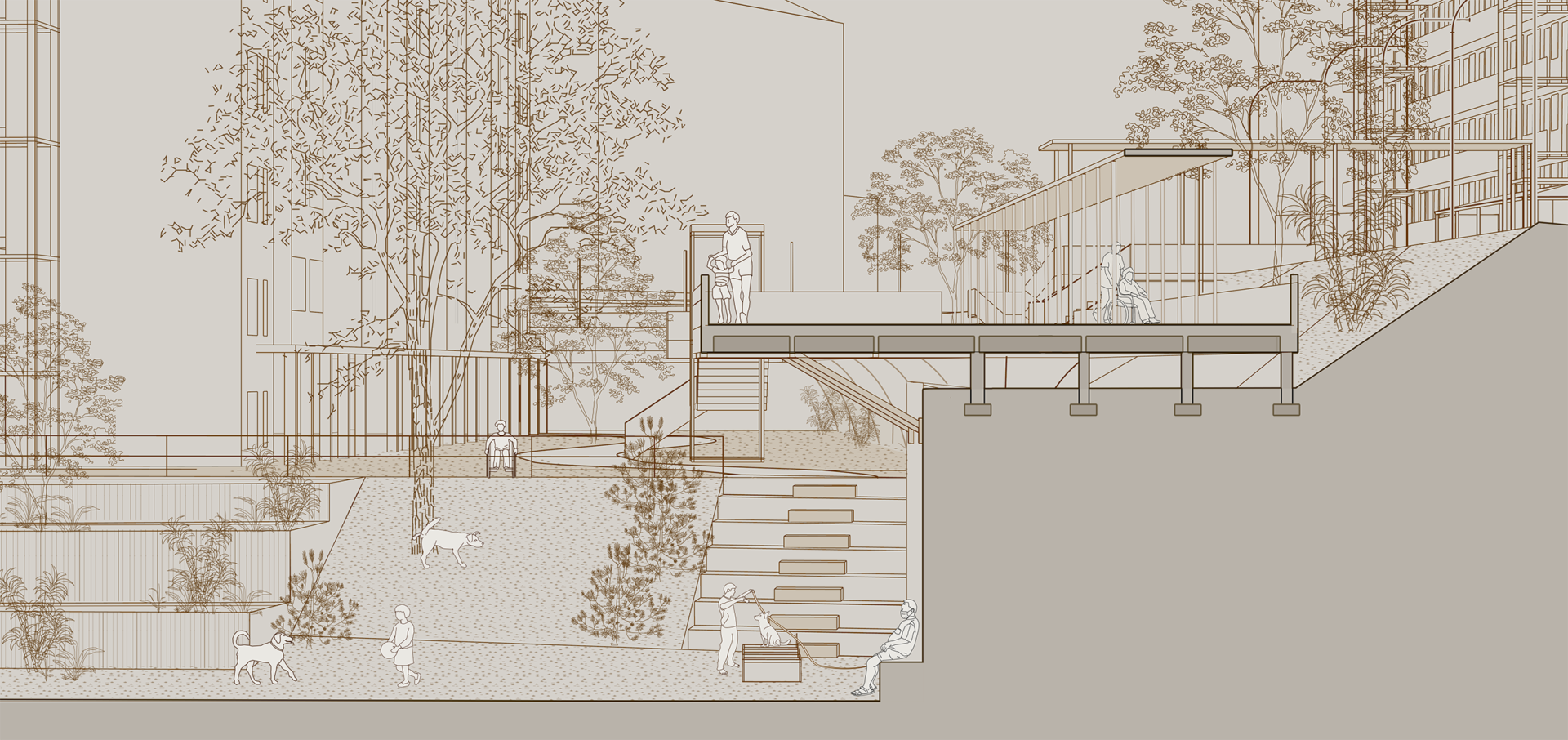
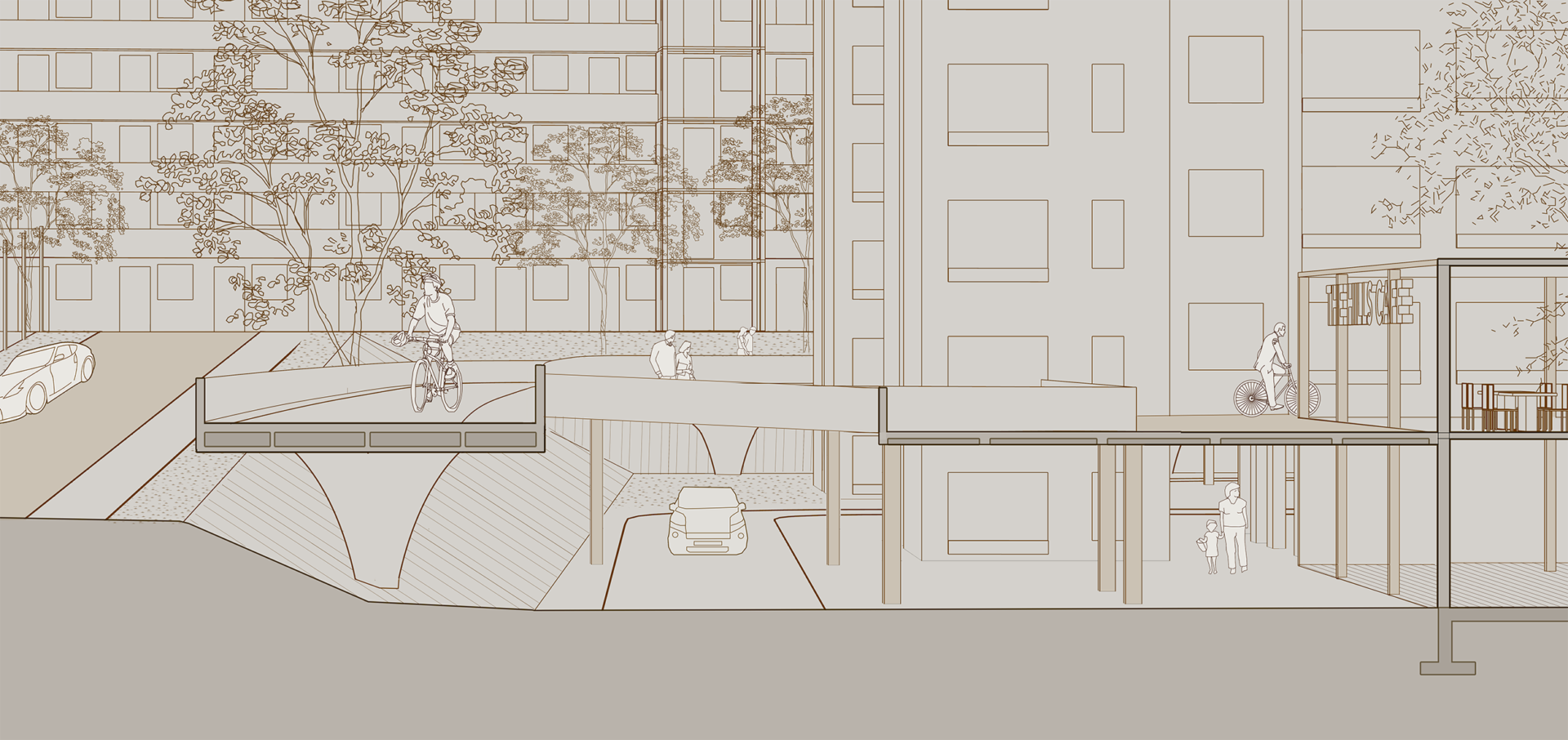
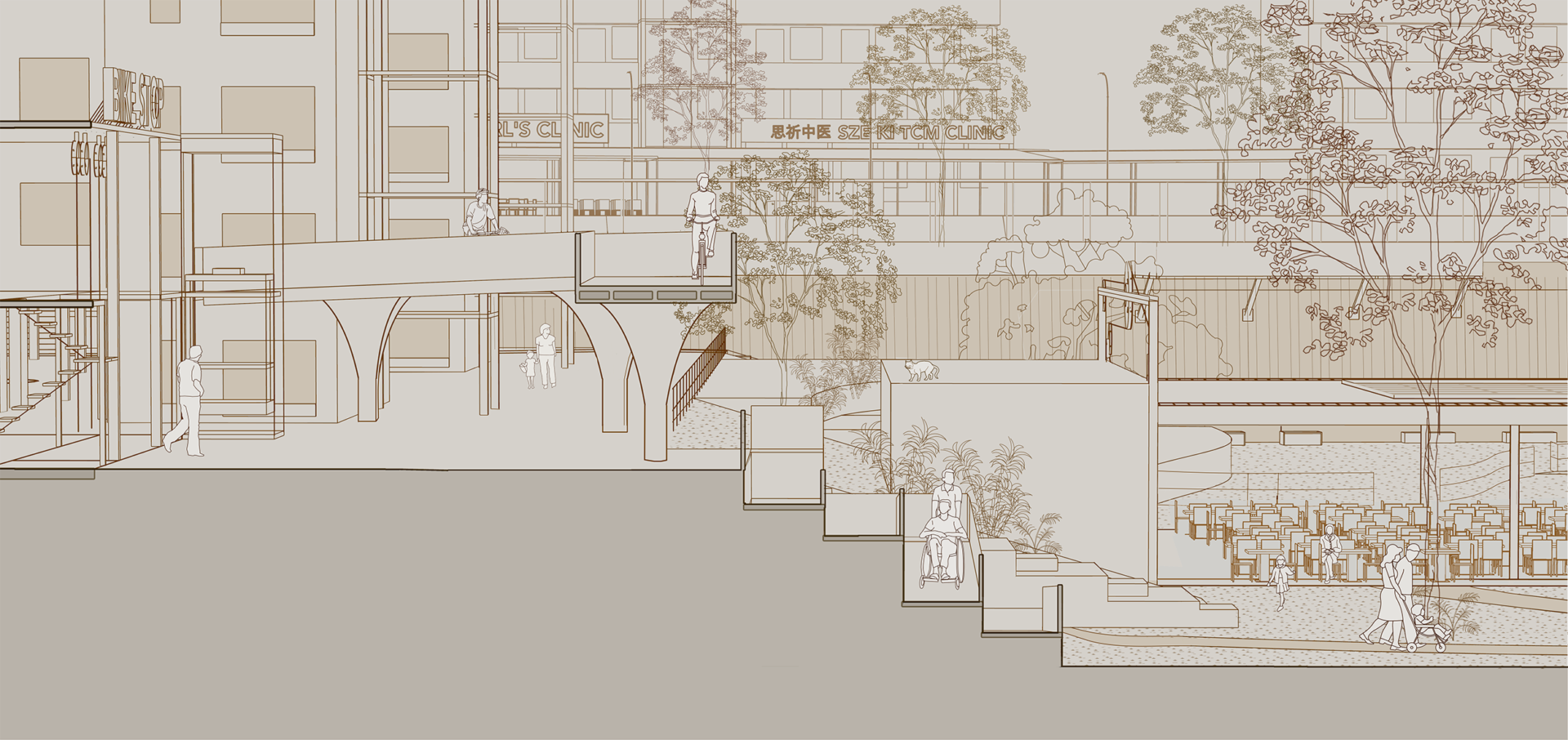
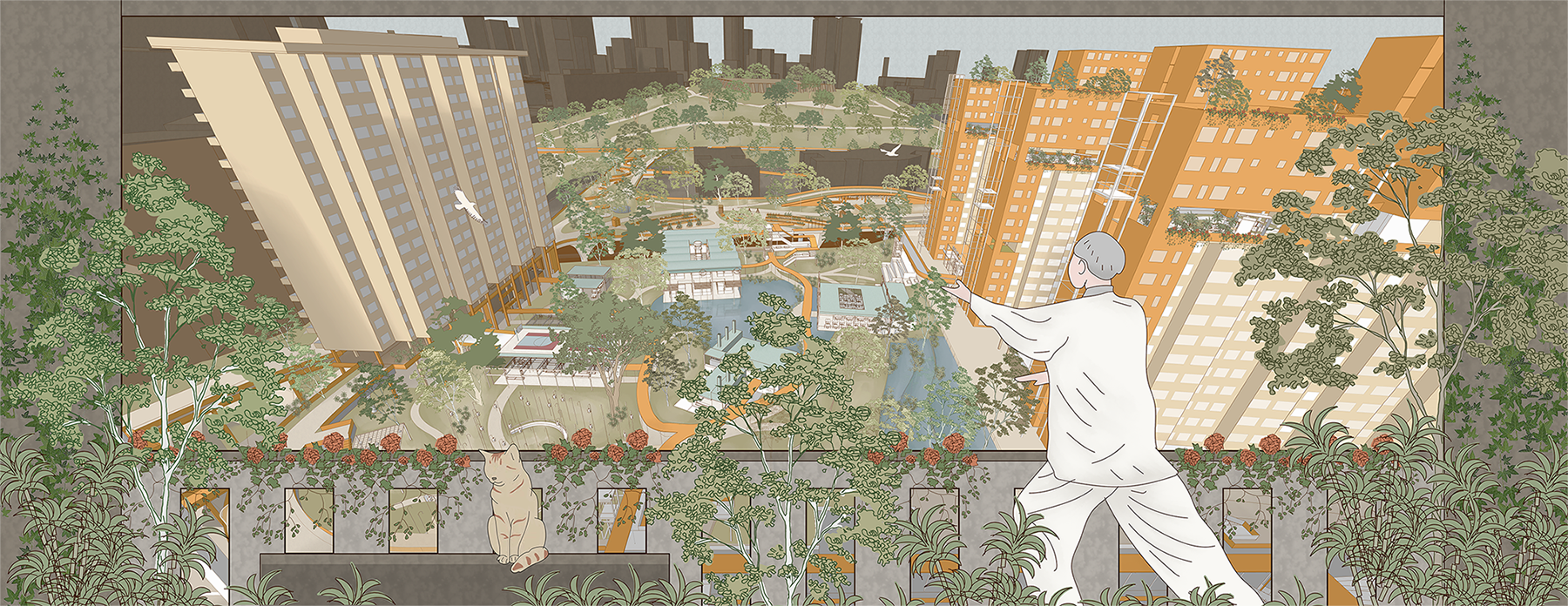
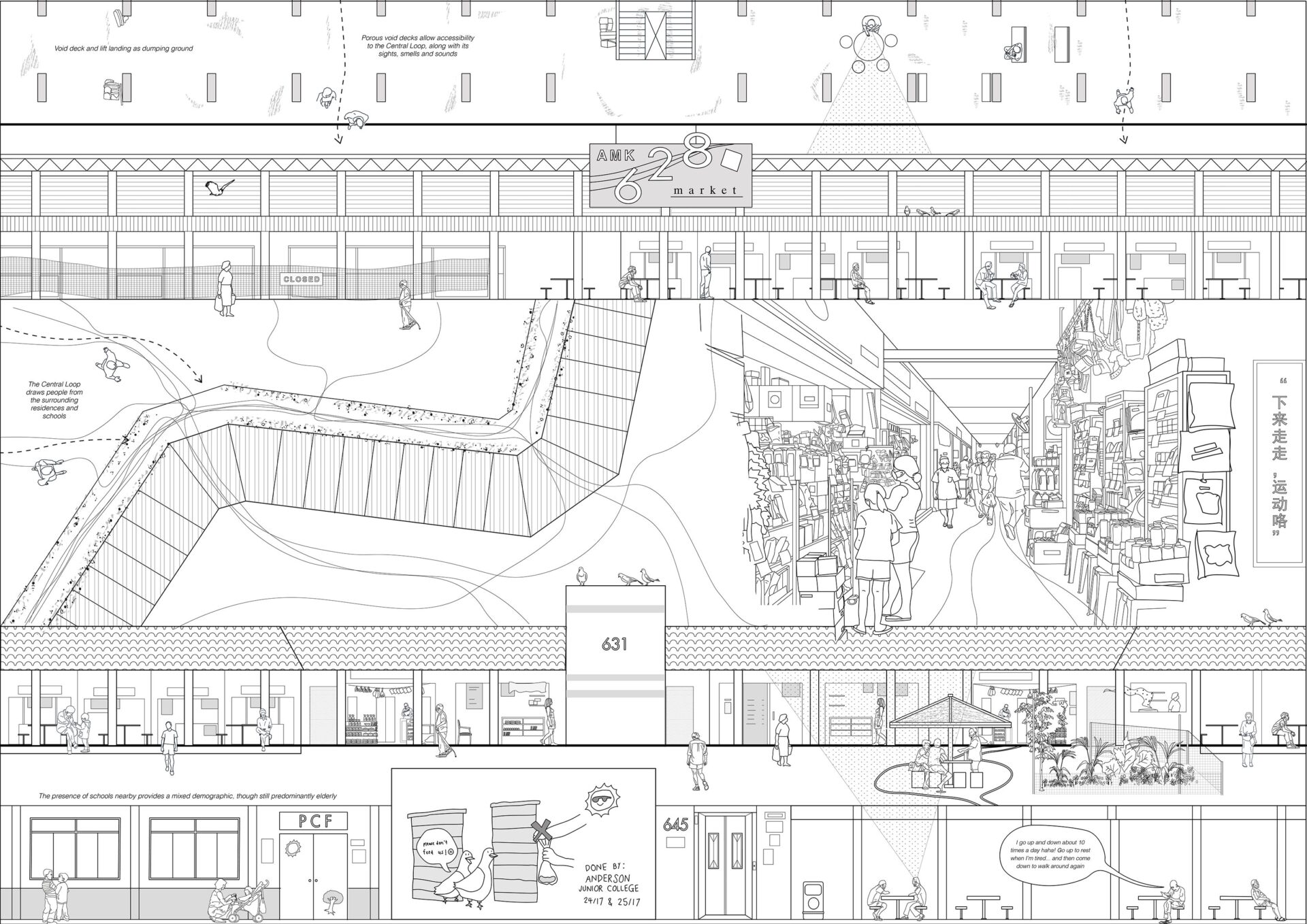

Supervisor's comments:
Ageing in place requires an ecological-like setup known as social infrastructure, term coined by sociologist Eric Klinenberg. The idea describes the significance of a network of interconnected and inter-dependent amenities supporting community life. Blue Pearl adopts a system thinking approach at understanding the challenges faced by the dominantly elderlies living in Jalan Kukoh enclave. The thesis does not just create the architectural solution driven by well-considered planning policy, it also imagines the social qualities and liveability that will permeate the new community.
- Assoc. Prof. Cheah Kok Ming